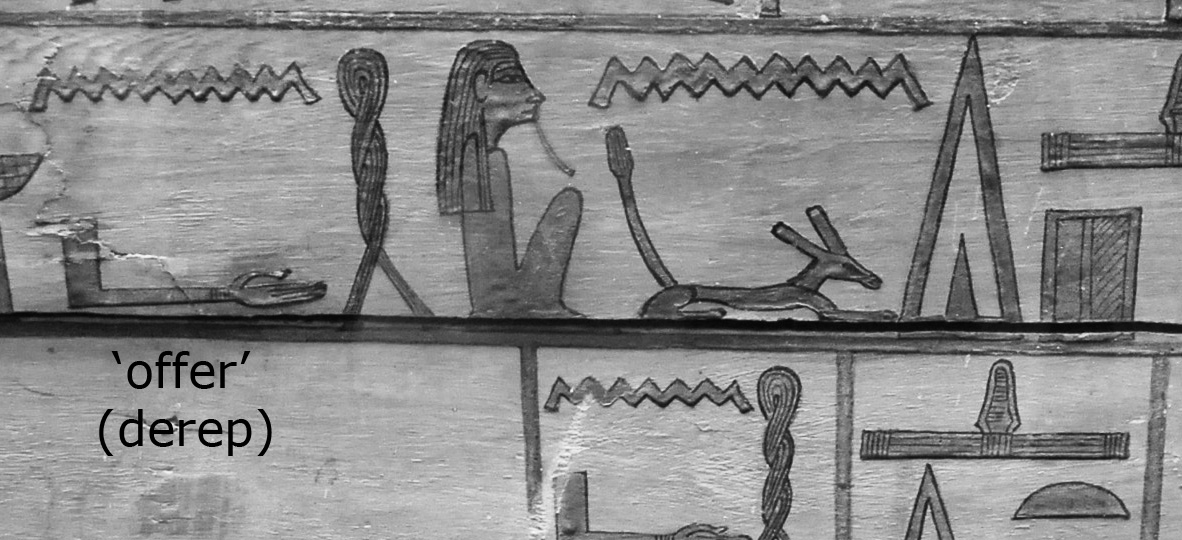
Sunday, February 24, 2013 B
"New Set Sighting"
1:44pm
I love the tail on this Set-animal!

Sunday, February 24, 2013 B
"New Set Sighting"
1:44pm
I love the tail on this Set-animal!
|
That tail, hmm, how shall I put it, has a certain "ithyphallic" quality. (It's not just my imagination, is it? I mean, considering the god Set is known for his lustful propensities. :) This Set animal appears on Henen's coffin, which is at the Louvre: |

| Looking up further information about this piece did not turn up very much. I only found this reference: |
|
"Henem", rather than "Henen", but the center portion of the glyphs in the example photo, which must come from the interior of the coffin, ("inscrites à l'intérieur de la cuve"), match those on the side panel. At least we know it's from the Middle Kingdom. What can we find out by examining the text itself? With my rudimentary hieroglyphic skills, I can detect several happy gods goddesses, (aka "contented" - "hotep"), having been given offerings. |


'Offer' (arm and hand extended), 'derep'

Sunday, March 3, 2013
 (From the info card)
(From the info card)Lintel of a chapel (?) dedicated to the god Set 19th dynasty (?) (about 1295 - 1186 B.C.E.) Deir el Medina Limestone, Louvre #E 14386 BIS
|
Forward...
Go Back to Archives...
Go Back to Main Journal Index Page...
Go to Index of Joan's pages...
![]()
© Joan Ann Lansberry